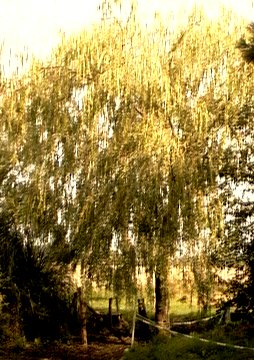

Both willows and poplars produce simple densely clustered flowers called catkins. The catkins in poplars hang down and produce no spell. By contrast, the catkins of the willow sits up and produces a strong smell. The flowers of the willow make an exception to the rule that only big showy flowers are pollinated by insects (the poplars are pollinated by wind). This is helped by the fact that willow catkins appear in early spring before other flowers, so the insects rely on the nectar from the flowers as a food source.
Most willows and poplars grow rapidly, flowering within a few years. They tend to be short-lived, some only lasting twenty years.
In human use, the twigs of some are grown for use in basketmaking. The light and dent resistant
timber of other types of willow have been used for artificial limbs, shoes, and bats.
Willow bark contains salicin, used in numerous folk medicines. Aspirin is a derivative of
salicylic acid, first synthesized from derivatives of willow bark. Some, such as weeping willow
and pussy willow, are used in horticulture and landscaping.
The willow family is Salicaceae. The genus is Salix.
The poplar genus is Populus (wasn't that a game?).
The common osier is Salix viminalis, weeping willow is Salix babylonica, and pussy
willow is Salix discolor.
Taken from Encarta, who took it from Funk & Wagnalls.